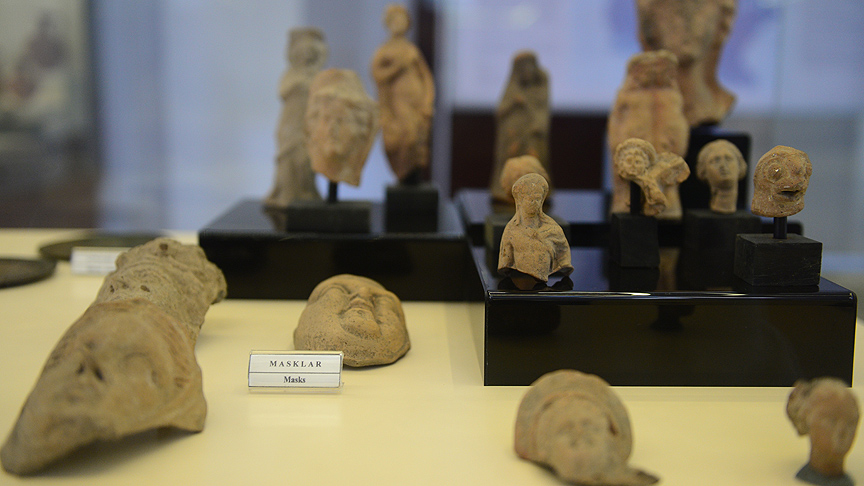The Giresun Museum operates in a historical building located in Zeytinlik Neighborhood (formerly known as Gogora Neighborhood), in the city center of Giresun, in Türkiye's Black Sea Region. The museum houses both archaeological and ethnographic artifacts, serving as a cultural institution reflecting the region's historical and cultural heritage.
History
The museum building was constructed as a church by the Greek Orthodox community starting from the mid-18th century, or specifically between 1850 and 1860. The original name of the building was Gogora Church, and it was located in the neighborhood known by the same name. Used for worship until 1924, the structure was abandoned after the Türkiye-Greece population exchange. The church remained empty between 1924 and 1948, suffering damage during this period.
Partially repaired in 1948, the building was used as a prison between 1948 and 1967. Remaining empty again between 1967 and 1982, the structure was significantly damaged and faced the risk of collapse. It was restored by the Ministry of Culture and Tourism between 1982 and 1988 and opened as a museum in 1988. The Giresun Provincial Special Administration allocated the museum building to the Provincial Directorate of Culture and Tourism for 25 years, thus allowing the structure to acquire its official museum function.
Architectural Features
The Giresun Museum was built as a rectangular-planned structure in an east-west direction within a courtyard. A hybrid plan, combining a basilical plan with a domed cross plan, was used in its interior layout. The building's exterior facade is made of cut stone material, and its roof is a hipped type covered with Ottoman-style tiles.
The main entrance of the building is on the west facade. On both sides of this entrance door, there are embossed column profiles and twisted colonnettes. The pediment section of the door is adorned with twisted colonnettes. The area around the main door is surrounded by rectangular and braided motifs. Additionally, there are two secondary doors on the north and south facades. The north door features “S” curved false arch ends and dentil cut ornaments. On the south door, a bastion motif has been used as a decorative element.
The interior consists of three naves; the central nave, covered by a barrel vault, is wider than the side naves. The column capitals of the naves, separated by two rows of columns, are in the Ionic style, and their bases bear local architectural features. The structure features a three-apse plan. The main apse and the apse projections on the sides provide a dynamic appearance on the exterior facade. The central apse is wider and higher than the side apses. At the center of the building, there is a dome with a high drum and 12 windows. Four columns extend towards the center in the dome, and a depiction of Jesus is located directly in the middle of the dome.
To the north of the structure, there is a three-story building, referred to as the “Priest’s House,” built on a basement floor. This building was constructed at a later date than the church. Restored to its original form in 1993, the Priest's House is currently used as the administrative building of the museum. The ground floor and first floor are arranged as administrative offices; the second floor serves as lodging. Each floor is approximately 100 square meters. Adjacent to the west facade of the Priest's House are two parallel cellars. These barrel-vaulted cellars are used as exhibition halls for the museum. There are two stone fountains on the south facade of the church and on the west facade of the Priest's House.
Museum Collection
The Giresun Museum exhibits archaeological and ethnographic artifacts from the Early Bronze Age, Hittite, Hellenistic, Roman, Byzantine, Seljuk, and Ottoman periods. In addition to artifacts collected from the region, pieces transferred from other museums are also included in the collection. The archaeological collection comprises terracotta figurines, vessels, amphorae, architectural fragments, and coins. The coins, belonging to different periods, shed light on the region's economic history. The ethnography section contains 19th-century clothing, kitchen and bath utensils, weapons, kilims, and jewelry. These artifacts reflect the traditional lifestyle and cultural structure of the local people.

Giresun Museum - AA
Location and Transportation
The Giresun Museum is located within the borders of Kale Neighborhood, in the city center of Giresun. The museum is easily accessible by foot and by vehicle.
Giresun Museum (Youtube/Giresun)


